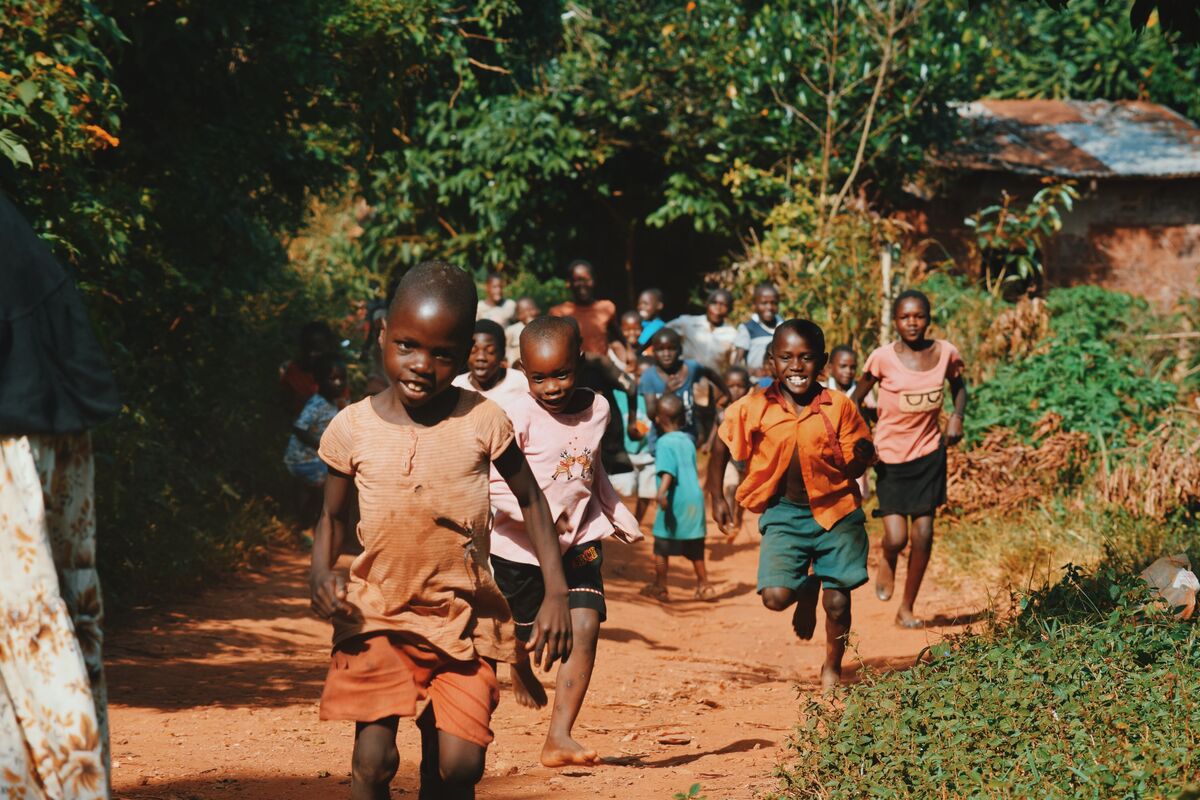- Austausch & Vernetzung
- Wissen & Lernen
- Advocacy
- Unsere Themen
Von Carine Weiss
There are over 1.8 billion young people in the world today, 90 per cent of whom live in developing countries. Adolescents and young adults have, until recently, been overlooked in terms of global health and social policy and this has resulted in them making fewer health gains than other age groups. The Lancet Commission of 2016 on adolescent health and wellbeing revealed for the first time the magnitude of challenges faced by young people aged between 10 and 24 years [Patton et al. 2016]. But what about the 5-to-9-year-old age group? Are they being overlooked in research and literature?

The evidence shows that we cannot neglect the crucial development period of children after their first 1,000 days. Children above the age of five have special needs for interventions that are only partially being met [Bundy, 2017]. The Millennium Development Goals placed a strong focus on the survival of children in the first five years of life. This may have caused the international community to lose sight of the fact that children over five have particular needs in growth and development that must be addressed. Policies and interventions have been developed focusing mainly on the first five years of a child’s development and this has created a gap in research, evidence and interventions especially for children between five and nine years of age.
There are several reasons for this neglect. The determinants of adolescent and child health lie largely outside of healthcare systems. Effective action requires an intersectoral approach. This issue has been compounded by the invisibility of children in health statistics, especially those between five and nine. It is essential to understand the specific health needs including those of all young people, regardless of their age, gender, marital or socioeconomic status.
Looking at the nomenclature of different age groups in childhood, there is a lack of clear definitions and names for this neglected age group. Some call it middle childhood or “school age” [Bundy, 2017]; others use different age ranges to define the middle childhood period, for example the CDC (Center for Disease Control and Prevention) uses the bracket of six to eleven years of age. The following graphic illustrates the ages and key phases of child and adolescent development according to Bundy et al. (2017).

The lack of data for this age group is evident as the majority of large-scale surveys do not focus on the 5-to-9-years-of-age group [Hill, 2015 & Hill, 2017], nor do national health information systems. There is also an intervention and research gap for children of ethnic minorities, LGBT (lesbian, gay, bisexual or transgender) youth, those with disabilities, and those who are homeless or in juvenile detention. The physical and mental health needs of these groups remain unmet. Scientifically sound information underpins any effective response. Yet because information systems on health and wellbeing are fragmented, the needs of these groups are invisible and are not being addressed.
The mortality rate is an indicator of the performance of a healthcare system and also of social inequalities. During middle childhood and adolescence, the major consequences of ill health are related to morbidity rather than mortality. The first empirical data on the mortality of 5-to-19-year olds comes from the Demographic and Health Surveys programme for 84 low and middle-income countries undertaken for the World Bank [Hill, 2015]. Despite being a healthy age range relative to all others, the estimates for 2010 suggest that the total annual mortality in low and middle income countries (LMICs) in the 5-to-19-year-old age group is around 2.3 million [Hill, 2015 and Hill, 2017]. The number of deaths estimated for children aged from five to nine years is 935,000 [Hill, 2015], chiefly the result of infectious childhood diseases. In countries lacking complete and accurate civil registration systems, the limitation in record keeping will adversely affect the ability to monitor changes or identify differentials in the mortality of older children and younger adolescents. This research gap results in very little information about the cause of death in the 5-14 age range [Bundy, 2017]. The Mukdad research group concluded in their study that the leading causes of death in 2013 for young people aged 10-14 years were HIV/AIDS, road accidents and drowning (25.2%) [Mokdad et al. 2016]. It appears undeniable that the vast majority of deaths in people aged 5-14 years are preventable [Nair and Byass, 2018].
The ages of five to 14 years represent an important period of social and educational development, including the onset of puberty. The scarcity of studies for this age group may also show the influence of unintended research bias on policy. The development phase of middle childhood is marked by a steady physical growth of the body while sensorimotor brain function develops. Middle childhood is rich in potential for cognitive, social, emotional and physical advancements. We cannot deny that development in middle childhood is linked to adolescence and, for many children, incorporates an initial period of juvenility followed by the early beginnings of pubertal processes. Difficult life circumstances in childhood can lead to mental health problems later in life.

The digital revolution has the potential to transform the social environment and networks of today’s children and adolescents. It has brought mobile phones to the great majority of young people, even in low and middle income countries. This revolution may not yet have reached the 5-to-9-year-old age group but it is unlikely to stop any time soon and it will certainly not exclude the youngest.
Middle childhood is often called the ‘forgotten years’ of development because most research is focused on early childhood development and on adolescent growth. The digital revolution may help close the gap in reaching this neglected age group with information, support and advice on physical and mental health.